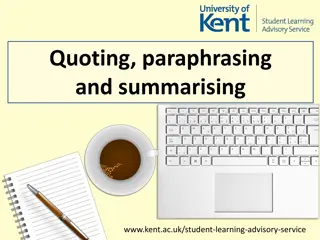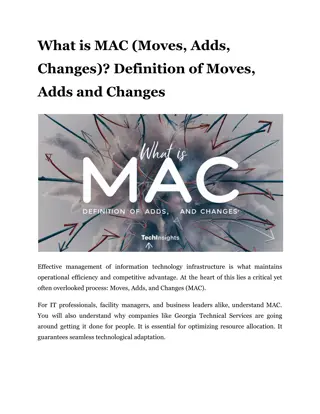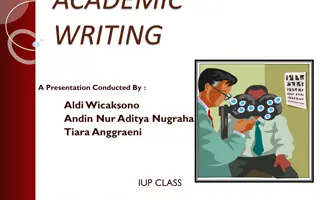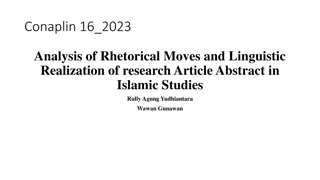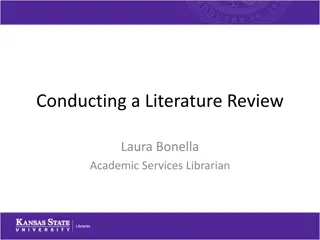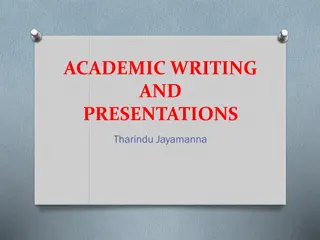Mastering Academic Writing Moves: The Art of Summarizing
In academic writing, mastering the art of summarizing is crucial for persuasive arguments. By engaging in dialogue with others and summarizing their arguments, writers can strengthen their position. It is important to strike a balance between the original author's ideas and your own, emphasizing aspects that interest you while respecting the original text. Putting yourself in the shoes of others and suspending your own beliefs can enhance the quality of your summary. Avoid undermining your credibility by exposing bias and strive for objectivity. Awareness of your biases and skillful navigation of summarizing in alignment with your arguments are key elements in academic writing.
Download Presentation

Please find below an Image/Link to download the presentation.
The content on the website is provided AS IS for your information and personal use only. It may not be sold, licensed, or shared on other websites without obtaining consent from the author. Download presentation by click this link. If you encounter any issues during the download, it is possible that the publisher has removed the file from their server.
E N D
Presentation Transcript
THEY SAY, I SAY T H E M O V E S T H A T M A T T E R I N A C A D E M I C WR I T I N G C H . 2
CH. 2: HER POINT IS THE ART OF SUMMARIZING The authors of this text point out that to argue persuasively you need to be in dialogue with others, then summarizing others arguments is central to your arsenal of basic moves (30). Some writers don t like summarizing 1. Because they may not want to return to the text in question and argue with it 2. Spending too much time on someone else s ideas will take away from their own
GENERAL RULES 1. Balance what original author and you are saying. 2. Needs to be true to what the original author says (31) 3. Also, it should emphasis on those aspects of what the author says that interest you, the writer (31) 4. This balance can be tricky 5. Ultimately you should respect the original text while structuring your words to support your own position
PUT YOURSELF IN THEIR SHOES Be willing and able to suspend your own beliefs Play what Peter Elbow called the believing game This is where you try to inhabit the worldview of those whose conversation you are joining and whom you are perhaps even disagreeing with and try to see their argument from their perspective (31) This is a temporary suspension but a necessary one if you are going to write a good summary
DONT UNDERMINE YOURSELF Not being able to play the believing game can undermine your argument by over exposing bias and hurting your credibility We want to try and look objective, even when we are not
EXAMPLE FROM THE TEXT David Zinczenko s article, Don t Blame the Eater, is nothing more than an angry rant in which he accuses the fast-food companies of an evil conspiracy to make people fat. I disagree because these companies have to make money This is a distorted view, full article in on p. 139-41 of the text He never has a angry tone in his article or suggests a conspiracy. This is very revealing of the writer s own bias
KNOW WHERE YOU ARE GOING The trick here is to be aware of your own bias Also, try not to let your bias become overtly or too obvious to your reader The authors note that This advice to summarize authors in light of your own arguments may seem painfully obvious. But writers often summarize a given author on one issue even though their text actually focuses on another (35)
AVOIDING THIS PROBLEM What you will want to do is to make sure that your they say and I say are well matched (35). What you are aiming to do is make sure that you are being able to balance perceptions between theirs and yours
WHAT HAPPENS WHEN YOU LOSE BALANCE People fall into List Summaries These tend to be an inventory [of] the original author s various points but fail to focus those points around any larger overall claim (35). Words that indicate this issue: and then also in addition
EXAMPLE OF LIST SUMMARY Our authors provide you with this example: The author says many different things about his subject. First he says Then he makes the point that In addition he says And then he writes Also he shows that And then he says (36). Playing Peter Elbow s believing game means doing justice to the source; if the summary ignores or misrepresents the source, its bias and unfairness will show (36-7).
SIGNAL VERBS THAT FIT THE ACTION Try to avoid the bland formula of saying things like: she says they believe Though this formula can work, but it often fails to reflect accurately what s been said (38). It is sometimes appropriate to use those phrases, but consider how more tailored and lively language might better suit your paper.
TEMPLATES FOR INTRODUCING SUMMARIES AND QUOTATIONS She advocates a radical revision of the juvenile justice system. They celebrate the fact that . , he admits.
VERBS FOR INTRODUCING SUMMARIES AND QUOTATIONS Verbs for Making a Claim Argue Assert Believe Insist Observe Remind Us Claim Report Emphasize Suggest Verbs for Expressing Agreement Acknowledge Agree Reaffirm Support Endorse Praise Corroborate Do not deny AdmireExtol Celebrate the fact that Verify
CONTINUED Verbs for Questioning or Disagreeing Complain QualifyComplicate Question Contend Contradict Reject Renounce Repudiate Refute Deny Deplore the tendency to Verbs for Making Recommendations Advocate Implore Plead Demand Encourage Urge Call forWarn Recommend Exhort
CH. 2 - EXERCISES To get a feel for Peter Elbow s believing game, write a brief summary arguing the opposite position of your thesis So, if my thesis arguing Watchmen represent You need to write a summary saying Watchmen does not represent Your brief summary should be 2-3 sentences in length. You will turn it in to me and then keep it when I hand it back to use in Counter-Argument later on.



